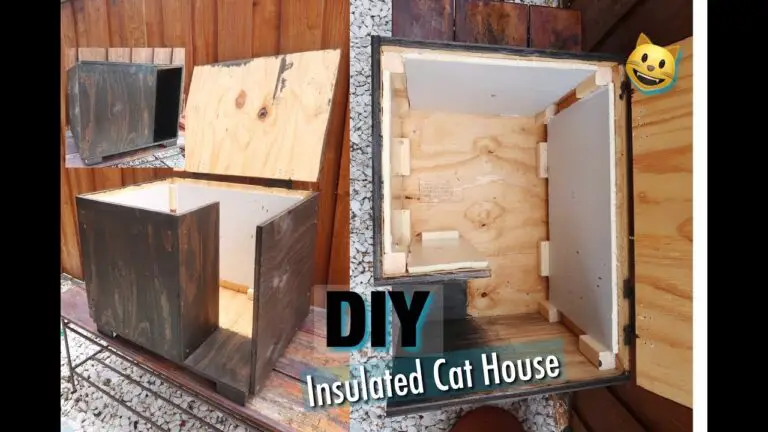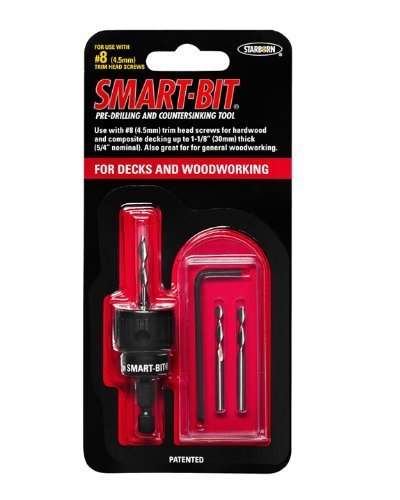Do Bed Bugs Eat Wood
No, bed bugs do not eat wood. Bed bugs are small, parasitic insects that feed on the blood of humans and animals. These insects are not capable of chewing or digesting wood.
Bed bugs are small, flat insects that feed on the blood of humans and animals. They are reddish-brown in color, wingless, and range from 1-7 mm in size. Bed bugs are often found in mattresses, bed frames, headboards, and other furniture.
While bed bugs can infest any type of furniture, they are most commonly found in beds.
Bed bugs typically feed at night while their host is asleep. They insert their long beak into the skin and withdraw blood through a straw-like mouthpiece.
Bed bug bites usually occur on the face, neck, hands, or arms and can cause redness, swelling, and itching. In some cases, bed bug bites may also lead to allergic reactions or secondary infections.
While bed bugs do not eat wood, they can infest wooden furniture such as beds, headboards, dressers, and chairs.
Bed bugs often hide in cracks and crevices in wooden furniture items and can be difficult to detect. If you think you may have a problem with bedbugs in your home or office furnishings call a professional exterminator for assistance.
How Long Can Bed Bugs Live in Wood
Most people don’t realize that bed bugs can live in wood. In fact, they can live in any type of furniture, including dressers, nightstands, and even headboards. While they prefer to live in mattresses and box springs, they will readily infest any wooden furniture in your home.
So how long can these pests survive in wood?
Interestingly, bed bugs can only survive for about a year without a blood meal. This means that if you have an infestation in your wooden furniture, it’s likely because the insects are coming out to feed on you at night.
Once they’ve had their fill, they’ll retreat back into the wood to hide during the day.
If you’re dealing with a bed bug infestation, getting rid of the pests is essential. But before you start treating your furniture, it’s important to understand how these insects operate.
By understanding their habits, you’ll be better equipped to eradicate them from your home for good.
How to Remove Bed Bugs from Wood Furniture
If you’re one of the unfortunate few who have had to deal with bed bugs, you know how difficult they can be to get rid of. And if you have wood furniture, the problem can seem even tougher. But don’t despair – there are ways to remove bed bugs from wood furniture without causing damage.
The first step is to identify the affected pieces of furniture. Look for small brown spots or reddish stains – these are likely signs of bed bug activity. Once you’ve identified the infested items, vacuum them thoroughly using a powerful vacuum cleaner with a hose attachment.
Pay special attention to any cracks or crevices where bugs may be hiding.
Next, use a stiff brush to scrub the affected areas of the furniture. This will help loosen any remaining bugs and eggs and make them easier to vacuum up.
Finally, treat the infested furniture with an insecticide designed specifically for bedbugs. Be sure to follow all instructions carefully and keep children and pets away from treated areas until they’re dry.
With some patience and perseverance, you can rid your wood furniture of bedbugs once and for all!
Signs of Bed Bugs in Wood Furniture
Bed bugs are small, dark brown insects that feed on the blood of animals and humans. Bed bugs can live for up to a year without feeding, and they are often found in mattresses, box springs, bed frames, and headboards. These pests can also infest other furniture in your home, including dressers, nightstands, and chairs.
Here are some signs that you may have bed bugs in your wood furniture:
1. You See Bed Bugs or Their Droppings: If you see bed bugs or their droppings (black or reddish-brown stains), this is a sure sign that you have an infestation.
2. Your Furniture Is Infested: If your furniture is infested with bed bugs, you may see small holes in the wood where the insects have been feeding.
You may also see bloodstains on the wood from where the bedbugs have been crushed.
3. You Have Bites: If you have bites on your body that are itchy and red, this could be a sign that you have bedbugs living in your furniture. Be sure to check for bites anywhere on your body, not just around your waistline where belts or other clothing items might cover them up.
Can Bed Bugs Live in Wood Bed Frames
Bed bugs are small, nocturnal insects that live off the blood of animals and humans. They are attracted to warmth and carbon dioxide, which is why they often congregate in bedding and other places where people sleep. Bed bugs can live in wood bed frames, as well as other types of furniture.
While bed bugs do not typically transmit disease, they can cause a number of health problems including skin rashes, allergies, and psychological distress. If you think you have bed bugs in your home, it is important to contact a pest control professional for treatment.
Can Bed Bugs Live in Wood Dressers
Most people think of bed bugs as creatures that only live in mattresses and bedding, but these pests can also infest other furniture in your home – like dressers. Bed bugs are attracted to the warmth and darkness of dressers, which make them the perfect hiding spot for these critters. If you have a bed bug infestation in your home, it’s likely that they’re hiding out in your dresser as well.
So, can bed bugs really live in wood dressers? The answer is yes! These pests can infest any type of furniture in your home, including dressers made of wood.
If you suspect that you have bed bugs in your dresser, there are a few things you can do to get rid of them.
First, start by thoroughly cleaning the inside and outside of your dresser. This will help to remove any eggs or larvae that may be present.
Then, use a powerful vacuum to suck up any remaining bed bugs. Be sure to dispose of the vacuum bag immediately afterwards to prevent the pests from escaping back into your home.
Finally, consider treating your dresser with an insecticide designed specifically for killing bed bugs.
There are many products on the market that will do the job – just be sure to follow the directions carefully so that you don’t put yourself or your family at risk.

Credit: www.justwoodfurniture.net
What Do Bed Bugs Eat to Stay Alive?
Bed bugs are parasites that feed off the blood of humans and animals. They are small, reddish-brown insects that are often found in mattresses, bedding, and furniture. Bed bugs can live for several months without a meal, but they will eventually die if they do not have access to food.
Blood is the only thing that bed bugs eat to stay alive. They use their long, beak-like mouthparts to pierce the skin of their host and then suck out the blood. A single bed bug can consume up to 7 times its weight in blood, which means a large infestation can be quite damaging to a person’s health.
While bed bugs typically bite humans while we are sleeping, they will also feed on animals if given the opportunity. Pets such as dogs and cats can also be hosts for bedbugs, although this is less common. If you think you may have bedbugs in your home, it is important to contact a pest control professional who can help get rid of them before they cause serious harm.
How Do You Get Rid of Bed Bugs on Wood?
Bed bugs are one of the most difficult pests to get rid of. They are small, elusive and can hide in cracks and crevices for months without being detected. If you think you have bed bugs, the best thing to do is call a professional exterminator.
However, there are some things you can do to get rid of bed bugs on wood.
The first step is to identify where the bed bugs are hiding. Look for them in cracks and crevices around your bed frame, headboard and nightstand.
Also check behind pictures and under loose wallpaper. Once you’ve found where they’re hiding, vacuum them up with a powerful vacuum cleaner. Be sure to empty the vacuum bag immediately afterwards so the bedbugs don’t crawl back out.
Next, use a steamer or heat treatment on all wooden furniture in your bedroom including dressers, nightstands and headboards. The heat will kill the bedbugs and their eggs instantly. You may also want to treat any other areas of your home where you’ve seen bedbugs such as couches, chairs or rugs.
After heat treatment, it’s important to seal all cracks and crevices around your bedroom furniture with caulk or spray foam insulation so the bedbugs can’t come back. Finally, wash all your sheets, blankets and pillows in hot water and dry them on high heat to kill any remaining bedbugs or eggs that may be hiding inside fabrics.
Will Bed Bugs Lay Eggs in Wood?
It’s a common misconception that bed bugs only lay their eggs in mattresses or other soft furnishings. In fact, these pests are just as likely to lay their eggs in wood as they are any other type of surface.
The reason why bed bugs choose to lay their eggs in wood is because it provides them with a safe and protected environment in which to do so.
Wood is an ideal material for bed bug eggs because it is strong and durable, meaning that the egg won’t be crushed or broken if someone sits on it or rolls over on top of it.
Another reason why bed bugs may opt to lay their eggs in wood is because it can offer them a degree of insulation from extreme temperatures. If the temperature outside is too hot or too cold, then this can kill bed bug eggs.
By laying their eggs in wood, bed bugs can help to protect their offspring from these extremes and improve their chances of survival.
Of course, just because bed bugs can lay their eggs in wood doesn’t mean that they always will – there are plenty of other surfaces that these pests will utilise if given the opportunity.
Does Wood Attract Bed Bugs?
Wood does not attract bed bugs, however they can live in wood if it is close enough to their food source. Bed bugs are attracted to the warmth and carbon dioxide that humans emit when they sleep, which is why they are often found in mattresses and bedding. However, if there are no humans around, bed bugs will happily feast on other animals, such as bats or birds.
Wood is not their preferred material to live in though, so you’re unlikely to find a large infestation of bed bugs living in your wooden furniture.
Conclusion
No, bed bugs do not eat wood. Bed bugs are small, parasitic insects that feed on the blood of humans and animals. They are reddish-brown in color and can be found in cracks and crevices in furniture, walls, floors, and mattresses.
Bed bugs are not known to transmit disease, but their bites can be itchy and uncomfortable.




